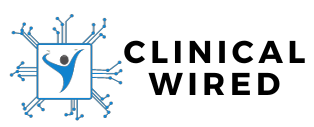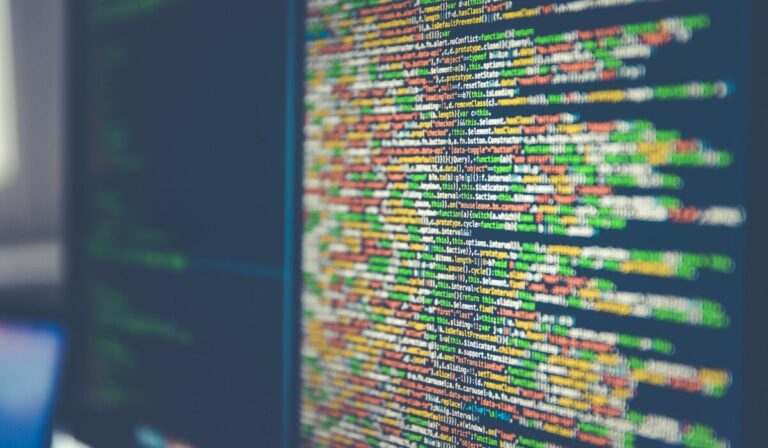Health informatics is a field that defines how we collect, analyze, and use medical data. With the healthcare landscape changing due to advancements in healthcare technology, careers in health informatics are in high demand and fill critical roles. If you’re considering a career in health informatics but are unclear on what it’s all about, let’s look at the field and its various career options.
Defining Health Informatics
Health informatics is a specialized area of healthcare that, in the simplest terms, is a system that blends information technology, data management, and the entire scope of healthcare to use healthcare resources more efficiently and improve patient care and outcomes.
Our healthcare systems collect a massive amount of data. Health informatics allows us to collect, analyze, and use this data to improve healthcare at every level.
Health informatics has become vitally important in our modern healthcare system. Health informatics plays a role in everything from developing new treatment plans, providing more accurate diagnoses, and more effective time management for patient care to helping hospitals and healthcare organizations meet or exceed their goals while staying within budget. Health informatics is behind the scenes, from large-scale research to the intimate relationship between patient and care provider.
The Interdisciplinary Nature of Health Informatics
There are three main components to the field of health informatics. These include information technology, data management, and healthcare. The field of health informatics offers many areas of special focus, but each requires some interdisciplinary approach involving these three areas.
A health informatics analyst may work mainly with data, but they still have an understanding of IT and healthcare systems. Those working in nursing informatics may be more involved in direct patient care, but data analysis and IT savviness are also required. The interdisciplinary approach puts health informatics professions in such high demand and is also part of what makes it such an attractive field.
The Scope of Health Informatics
Here’s a more detailed look at the three core components of health informatics:
Big Data
We’re seeing a significant shift in population demographics, and big data is one of the most important tools for providing quality healthcare in the future. A significant portion of the population is aging, and thanks to both advancements in medicine and a greater awareness of how to live healthier lives, we have the potential to live longer and healthier than at any other time in history.
On the flip side of this, we’re also seeing a decline in birth rates, which presents a unique problem in healthcare in the future. We’re facing an aging population and an insufficient working-age population to care for them. Big data is so important right now because it helps us learn more about how to prevent and not just treat disease. This is key, considering that based on demographic shifts, healthcare twenty years from now may look very different than it does today. [1]
The healthcare industry is the largest collector of data in the world. We can learn from and use such information to advance our current system, including medical research and patient care. Health informatics allows us to collect this data, analyze it, identify patterns, predict trends, and use it for informed decision-making, leading to measurable improvements in all areas of healthcare.
What the healthcare industry needs now, more than ever, are inspired individuals with analytical minds in the field of health informatics.
Information Technology
While data fuels health informatics, none would be possible without the information technology (IT) component. The healthcare industry needs technology and IT specialists to collect and safely store large amounts of data. The industry also needs innovative people to create new tech solutions and problem-solve when issues arise.
Healthcare
Healthcare is the segment of health informatics most closely connected to the patient. Healthcare providers with health informatics knowledge and education are key to completing the circle and ensuring that the benefits of health informatics reach the patient.
Healthcare informatics specialists play a key role in reporting data, ensuring accuracy, spotting trends, and using data in decision-making that improves patient outcomes. Healthcare workers of all levels can enter the field of health informatics, from those with associate’s degrees to nurses and physicians.
Areas of Application
The American Medical Informatics Association defines several key areas where informatics technology is used throughout healthcare. [2] Among the key areas of application include:
- Hospitals: Health informatics protects the accuracy and security of patient data shared between healthcare providers. On the patient level, it helps providers make informed decisions for improved patient care. At the hospital level, health informatics improves communications, streamlines processes, and helps hospital administrators assess new areas for technological and patient care growth.
- Clinics: Similar to hospitals, health informatics are used in clinic settings at an operational and administrative level. Data and technology are used to deliver improved healthcare services.
- Public Health Organizations: Public health informatics is involved in surveilling and collecting data surrounding public health issues. This includes using health informatics for disease prevention, health emergency preparedness, and the overall promotion of health and well-being at a public population level.
- Research Institutions: Research facilities utilize health informatics to collect and analyze clinical trial and study data.
Historical Evolution of Health Informatics
While health informatics is a relatively new focus area of healthcare, the pioneers paved the way for the rise of health informatics as far back as the early 1950s.
History and evolution
- The birth of health insurance in the 1930s sparked a need for medical management systems with more advanced capabilities.
- The first health informatics applications in the 1950s focused on administrative operations, such as patient record-keeping. The beginning years of health informatics focused on emerging technologies that could meet the demands of the new healthcare industry.
- In the 1960s, the Massachusetts General Hospital Multi-Programming System (MUMPS) became one of the first and most foundational health informatics systems.
- POMR (problem-oriented medical records) changed how and what type of patient data was used and collected, focusing less on simple diagnostics and treatment and more on evaluating the evolution of a patient’s history.
- The 1970s brought about more widespread use of digital health records.
- During the next decade, personal computing and software development advancements will make data sharing more accessible for smaller healthcare operations.
- During the 1990s, the accessibility of the Internet created a fast exchange of health information.
- In the last twenty years, EHRs have become more accessible, and technology advancements, including telehealth, wearable health management devices, and AI, have further changed the landscape of health informatics.
The Role of Health Informatics in Modern Healthcare
In 2009, the Health Information Technology for Economic Clinical Health Act was established, and with it, several priorities for using health informatics in modern healthcare. [3] These priorities include steps to improve the health status at both an individual and population level. This can be accomplished through improving patient care, increasing operational efficiency, and encouraging data-driven decision-making.
- Improving Patient Care: Health informatics reduces errors when data is recorded and shared, improves the efficiency of healthcare coordination, provides greater access to health care, improves decision-making by healthcare providers, and encourages patients to become more involved in their health. All of this combined leads to improved patient outcomes.
- Operational Efficiency: Health informatics streamlines operational procedures, such as scheduling, billing, and insurance processing. This saves time, allows offices to run more efficiently, and reduces costly operational errors.
- Data-Driven Decision-Making: This is one of the broadest roles of health informatics. Acquired data is applied to making decisions in every area of healthcare, from administrative processes and diagnosing and treating diseases to preventing burnout among healthcare providers.
Key Technologies in Health Informatics
EHRs: The widespread use of electronic health records (EHRs) is arguably one of the most significant advancements in health informatics. EHRs offer a continuity of care that didn’t exist before electronic patient records. EHRs reduce errors, open more channels to effective healthcare (such as telehealth), and make care coordination between multiple healthcare providers possible.
Telemedicine: Before 2020, telemedicine was more of a niche medical practice. It was available, but many people either weren’t yet aware of its use or weren’t comfortable using it. When the COVID-19 pandemic stopped normal, non-emergency medical visits, the value of telemedicine, made possible by tools of health informatics, became evident.
Clinical Decision Support Systems: When effectively accessed, health data can assist clinicians in decision-making. Computerized clinical decision support systems use clinical and patient knowledge to assist doctors, nurses, and other clinicians in making diagnoses and decide on effective treatment options.
Wearable Health Technology: Health-focused wearables go far beyond measuring the number of steps taken or calories burned. Sophisticated wearable technology captures real-time health data that can detect health issues at the onset, catching serious and urgent health issues, sometimes before they occur. For example, devices that detect when an asthma attack or cardiac event is imminent.
Medical AI: This field of health informatics is still emerging, but the potential is unbounded. Medical AI collects massive amounts of health data, can predict disease and high-risk health conditions, and offers greater insight into treatment therapies.
Challenges in Future Directions
The future of health informatics is exciting, but as with everything, there are challenges in the future of the field as well. Here are the challenges that need to be addressed and what health informatics looks like in the future.
Current Challenges
Data Security
Scams, hackers, and internet crimes have become more sophisticated, and healthcare, with its immense amount of data, is continually a target. We saw an example of this in 2020 when the University of Vermont Medical Center was hit with a ransomware attack that cost them an estimated $50 million and rendered EHRs, electronic payroll, scheduling setting software, and other digital tools useless for about a month. [4]
With an estimated 34% of healthcare organizations being targets of ransomware attacks, data security must be a top priority. [5]
Privacy
One of the main advantages of health informatics, particularly EHRs, is that patient data can easily be shared among healthcare providers and facilities. While this has obvious benefits, it also threatens patient privacy, especially since the HIPAA Privacy Rule doesn’t govern some data-sharing tools. [6]
Interoperability
As health informatics applications expand, we’re seeing some challenges in how data is applied regarding interoperability. This includes data inconsistency, compatibility issues, protection of private patient information as it is exchanged, human errors, system errors, and the fact that more healthcare professionals with health technology tools are needed in the field.
Meeting the Demands of Telehealth
Telehealth presents a unique challenge for health informatics. The very process of patient and physician meeting on a digital platform creates a level of cybersecurity concern. Not only is patient data at risk, but there’s also the potential for the entire patient visit to be accessed and exposed.
As the demand for telehealth grows, so does the need for secure medical video conferencing platforms and encryption-protected software.
Future Trends
Future trends in health informatics give us a glimpse into how everyone, from healthcare organizations to individual patients, is learning to leverage technology for improved outcomes across the board.
A few trends the industry has its finger on include building the potential of wearable technology and the Internet of Medical Things, cloud migration, enhanced telehealth, data protection, remote patient monitoring, and expanded interoperability.
Career Opportunities in Health Informatics
Careers in health informatics offer exciting and expansive opportunities. Entry-level opportunities in the field can be reached through an associate’s degree and certifications; however, most stepping into the field for the first time have earned a bachelor’s degree at minimum. Continual education is key to building a lifelong career with advancement opportunities.
Nursing Informatics: Clinical informatics nurses and nursing informaticists work more closely with direct caregivers and patients to implement and use patient care technologies to improve healthcare outcomes.
Clinical Informatics: As a clinical informatics analyst or clinical informatics specialist, professionals are involved in reviewing data. Managing and improving data systems, troubleshooting, data security, data analysis, and ensuring federal compliance are some aspects of these mid-level health informatics positions.
Data Management: These roles are found primarily within hospitals, healthcare organizations, and private medical settings and are mainly responsible for the smooth management of data and the overall operability of health informatics systems.
Data Security: This is a growing, important sector of health informatics that can be entered with a bachelor’s degree in network security, computer science, IT, and database administration.
Health IT Project Management: This is a mid-level area of health informatics with a higher-than-average salary. Health IT project managers lead large projects and ensure compliance, standards, and budget requirements are met.
Physician-Based Roles: Physician informaticists and informatics physician advisors are PhDs that either work directly with implementing clinical informatics or serve in an advisory role on how to use best informatics tools for organizational, healthcare, and patient benefits.
Education and Research: This field includes medical informatics scientists in general health and specialized focuses such as Bio medics and genomics. These are PhD-level research positions that work to analyze and evaluate high-level medical data.
Public Health: These roles use health informatic technology to monitor, analyze, and improve public and population health outcomes.
Conclusion
Health informatics is playing a key role in the ever-evolving landscape of healthcare. Informatics technology and data can be applied to every level of healthcare, from direct patient care at walk-in clinics to large-scale medical research facilities. There are challenges ahead, but there are also exciting innovations and new uses of health technology. Those entering the field can look forward to exciting opportunities that make a real difference in our healthcare systems.
Call to Action
What’s the next step to claiming a career in health informatics as your own? It begins with exploring the different career opportunities and embarking on an educational pathway to get you there. Health informatics is a field that can be entered with an associate’s degree, and with continuing education, advancement opportunities are plenty.
Sources
[1] Batko, K., and Slezak, A. “The Use of Big Data Analytics in Healthcare.” Journal of Big Data, 2022.
[2] American Medical Informatics Association. “Informatics: Research and Practice.” AMIA.org.
[3] The Office for the National Coordinator for Health Information Technology. “Health IT Legislation.” HealthIT.gov.
[4] Weiner, S. “The Growing Threat of Ransomware Attack on Hospitals.” Association of American Medical Colleges, 2021.
[5] SOPHOS Cybersecurity. “The State of Ransomware in Healthcare 2021.” SOPHOS.com, 2021.
[6] Theodos, K., and Sittig, S. “Health Information Privacy Laws in the Digital Age: HIPAA Doesn’t Apply.” Perspectives in Health Information Management, 2020.




